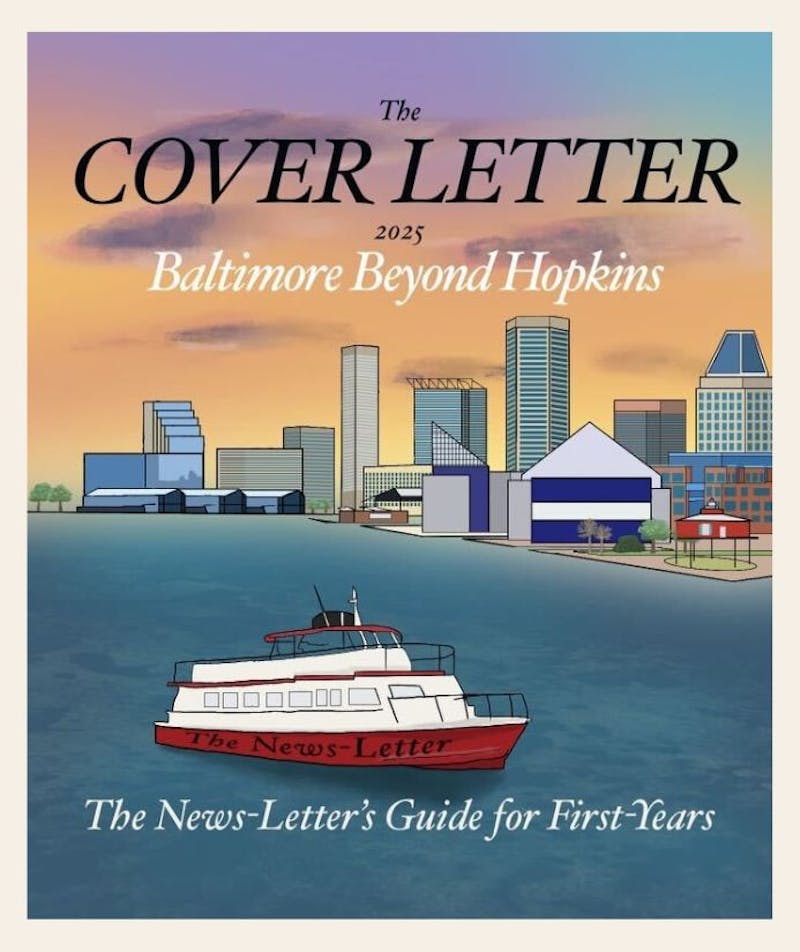Eminent painter and former Hopkins art instructor, John Hull, will be on the Homewood campus Monday, March 29 to give a presentation entitled "American Narrative Visions." The slide talk is the opening event to commemorate the Homewood Art Workshops' 30th Anniversary celebration, a milestone year for the arts at Hopkins, especially in light of their new home in the Mattin Center and the Homewood Arts Programs' first-ever faculty art show, held back in November of this school year. And who better to celebrate the arts at Hopkins than someone who knows first-hand how important they are here?
After several years as the program director at Baltimore's School 33 gallery, Hull taught painting in the Johns Hopkins Homewood Art Workshops from 1985-86. He then went on to teach at Augustana College in Illinois, Yale, and at the University of Colorado in Denver, where he is currently a professor of painting and drawing. With such a broad perspective on the fine arts through his experience on other college campuses, Hull is sure to bring with him a vision for the potential that they have to grow even larger here at Hopkins.
His paintings deal with history and literature, but are placed in contemporary settings. Often called a "narrative painter," because his paintings are best viewed all together so to tell a story, Hull brings a sense of drama to his paintings. "These narrative paintings are him [Hull] telling a story and raising questions in the viewer's mind. And that's how he sucks you in," said Craig Hankin, director of the Homewood Art Workshops.
The signature Hull style is especially apparent in the "Shakespeare" series, which takes its inspiration from the Bard's literature, but places his famous comedies and tragedies within a modern day context. Instead of Italian Renaissance-styled cap-sleeved dresses and tights with tunics, the figures in this series of paintings are interpreted as American soldiers wearing military fatigues.
Hull's diverse interests have brought him to diverse projects. He has also painted historical paintings of the Alamo and was the artist-in-residence for the St. Louis Redbirds, the Triple-A farm team for the St. Louis Cardinals major league baseball club. It is in this series, which forgoes the big homerun moments in baseball for the behind the scenes nitty-gritty that one gets an idea of what Hull is interested in. He paints everything but the major action, from bat burning locker room rituals to the downtime when pitchers are waiting to be called out of the bullpen, and through such studies Hull captures the details that make the world real.
At first glance, his subject matter has a very quotidian quality to it; his canvases are peppered with images of junkyards, pickup trucks, dirt roads, horse trailers, mailboxes and quiet small-town streets. The people in them wear jeans, short shorts, construction hats and no shirts. But there is sometimes something a little seedy about John Hull's painted world. In "Closing Time," a man lies in the middle of the street, apparently drunk, while two others look on, perplexed as to how to get him up.
In another, called "One Way," an EMT and state trooper police officer attend to an injured man in the roadside of a trailer park, littered with old tires and abandoned machinery. Yet these ordinary, unglamorous places and objects and people take on a quite remarkable quality in Hull's work.
Hull paints these regular folks during a moment of importance in their lives, some moral dilemma or other crisis. And his titles only add to the urgency of his paintings subjects. "Getaway" depicts a man and woman slumped against an old yellow pickup truck, its hood wide open, with a third man apparently having given up on it. They are clearly not going to get away from whatever they are fleeing.
Not only is Hull a gifted storyteller, he is a brilliant artist. His paintings give us shadows, moonlight, and rays of sun that fall in all the right places. He is not overly precious with detail, especially in his figures with which he is satisfied to nail down gesture rather than give the particulars of facial expression. All of these techniques -- from lighting to gesture -- and choice of subject matter emphasize the is a strikingly stark element of reality in his work.
"American Narrative Visions," will be presented on Monday, March 29, 2004 at 5 p.m. in Room 101 of the Jones Building, Mattin Center. The event is free and open to the public.


